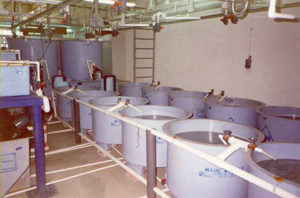
Tilapia culture in Kuwait was initiated by the Kuwait Institute for Scientific Research in 1982 to screen and select species suitable for intensive commercial production in 38 to 40 ppt seawater and 3-8 ppt brackish groundwater. Six research projects were conducted over a period of 17 years.
Water resources
The coastline of Kuwait is 290 km long with a total land area of 17,818 square kilometers. Brackish groundwater in the Kuwait Group and Damam Line aquifers stretches east of the Arabian Peninsula and slopes slightly toward the Arabian Gulf. The main brackish water wells are in the agriculture areas of Al-Wafra, 100 km south of Kuwait City, and Al-Abdali, 120 km to the north.
Species selection
In seawater, Oreochromis spilurus and the hybrid O. aureus x O. spilurus were determined to be better suited to Kuwait’s culture conditions than O. aureus or red tilapia.
Seedstock production
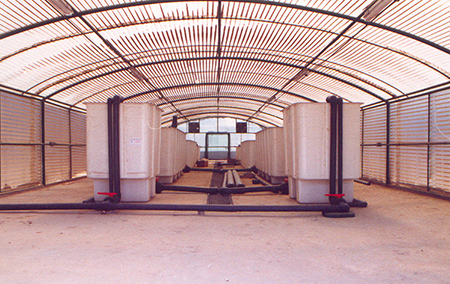
Research results showed the mean fecundity of O. spilurus in brackish groundwater was 2-5 times higher than in seawater. The hatching rate was twice as high in brackish groundwater (43 percent) than seawater (21 percent). In brackish groundwater, the daily fecundity of O. spilurus females of 33.9 g mean body weight was 60 seeds (eggs and fry) per kilogram female. Fecundity was lower in larger females of 174.1 g and 683.3 g – 27 and 2 seeds per kilogram female per day, respectively.
Growth
Raceways
In seawater-supplied raceways, O. spilurus grew from 142 to 290.1 grams in 124 days at a growth rate of 1.19 grams per fish per day. This represented a production rate of 35.2 kg fish per cubic meter.
Sea cages
In Kuwait, the culture of O. spilurus in seawater cages is possible only from mid-April to mid-November, when the water temperature is favorable. Stocking densities of 600 and 200 fry per cubic meter were considered optimum for the nursing and rearing phases, respectively.
In sea cages, the fish grew from 118 to 323.3 grams in 101 days at a growth rate of 2.03 grams per fish per day – a production rate of 44 kg fish per cubic meter. In another seawater cage experiment, growth rates of O. spilurus were 2.31 to 3.49 grams per day, feed conversion ratios were 1.47 to 2.13, and survival rates were 94.99 to 97.71 percent.
Tanks
In tanks supplied with seawater, fish grew from 23.1 to 259 grams in 180 days with a growth rate of 1.28 grams per fish per day. This represented a production rate of 36.4 fish per cubic meter. In tanks supplied with underground seawater, a stocking density of 1,000 fish per cubic meter and feeding rate of 2.5 percent per day were recommended for optimum production of tilapia fingerlings during winter.
Integration with agriculture
Integration of tilapia in agriculture farms in Kuwait was conducted at the Public Authority for Agriculture and Fisheries farm in Al-Wafra. This study showed that average annual production of 2,500 kg fish can be achieved using established plant irrigation schedules, and market-size (300 grams) fish can be produced within 220 days.
Private production
Tilapia farming was first reported at private farms in the Al-Wafra and Al-Abdali agriculture areas in 1986. Currently, 58 farms utilize brackish groundwater to produce tilapia. A total of 100,000 kg of O. spilurus and O. niloticus were produced and marketed in Kuwait in 2001.
(Editor’s Note: This article was originally published in the December 2002 print edition of the Global Aquaculture Advocate.)
Now that you've reached the end of the article ...
… please consider supporting GSA’s mission to advance responsible seafood practices through education, advocacy and third-party assurances. The Advocate aims to document the evolution of responsible seafood practices and share the expansive knowledge of our vast network of contributors.
By becoming a Global Seafood Alliance member, you’re ensuring that all of the pre-competitive work we do through member benefits, resources and events can continue. Individual membership costs just $50 a year.
Not a GSA member? Join us.
Author
-
Abdulkader Ameen Al-Ahmed
Associate Research Scientist
Aquaculture, Fisheries, and Marine
Environmental Department
Kuwait Institute for Scientific Research
P.O. Box 1638
Salmiya 22017 Kuwait[119,107,46,117,100,101,46,114,115,105,107,64,100,97,109,104,97,97]
Tagged With
Related Posts
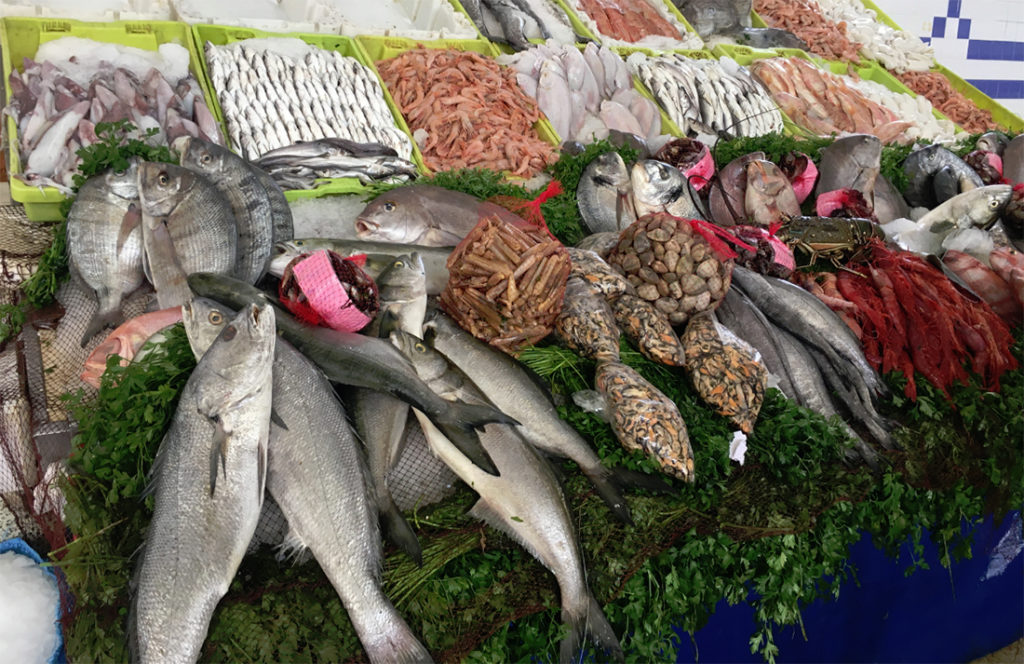
Intelligence
The Arab region seafood marketplace, part 1
All 22 Arab countries are producers, importers, exporters and consumers of seafood products. The total seafood production from capture and aquaculture was 4.7 million metric tons in 2016, of which 1.5 million metric tons (36 percent) was from aquaculture.
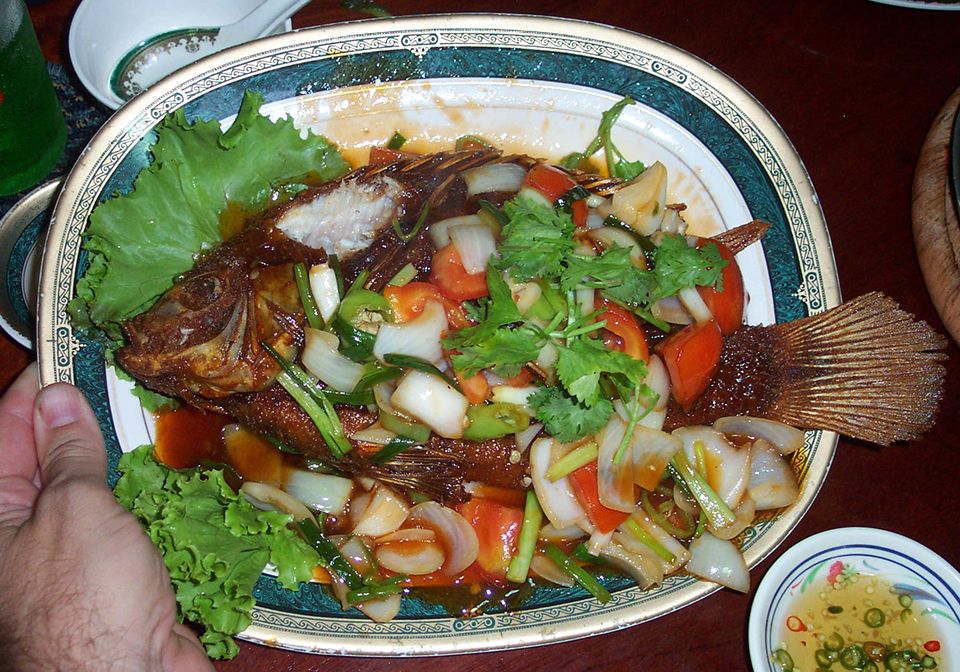
Intelligence
Tilapia: A truly global aquaculture industry
Tilapia are a diverse group of tropical fish with over 100 species that originally came from Africa and the Middle East but now are farmed worldwide.
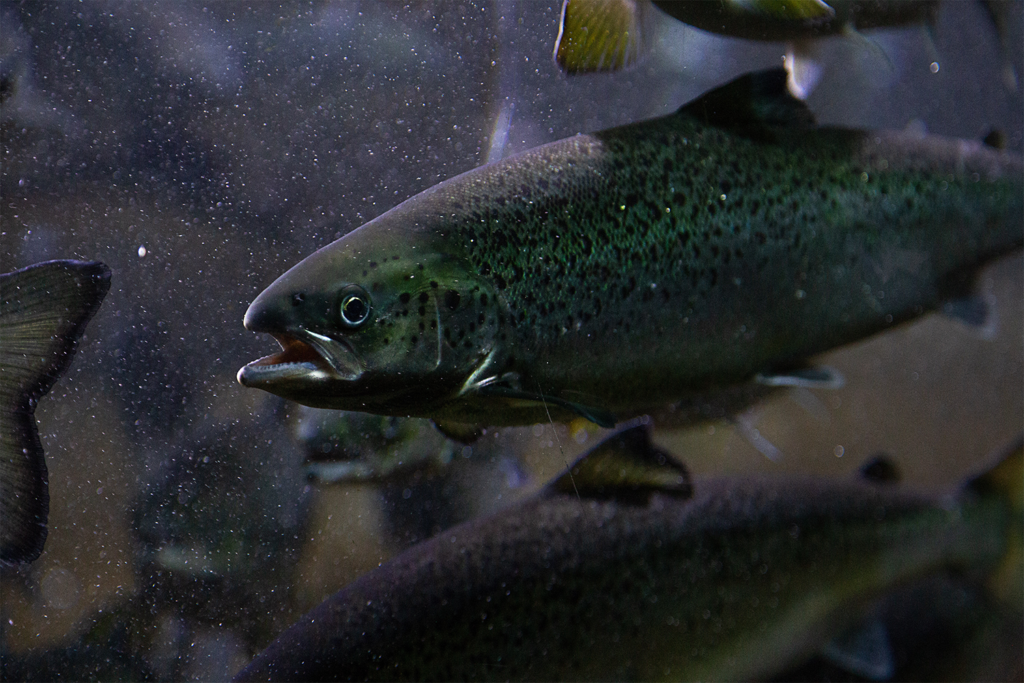
Innovation & Investment
A salmon farm in Dubai, because of course
Last year Dubai-based Fish Farm LLC sold the first batch of salmon to be born and bred in the United Arab Emirates. More are certainly coming.

Innovation & Investment
Aquaculture Exchange: Carsten Krome, Alimentos Ventures
A business accelerator helps small businesses grow and ready themselves to capitalize on institutional investment opportunities. Sounds exactly what the aquaculture industry needs. Carsten Krome tells the Advocate about the various business models his new firm is investigating.


